"Remember this; if you don’t set goals for yourself, you will be at the mercy of someone who will set them for you!"  More than 17 years and 600 million dollars ago…Tiger Woods was quoted as saying… “The thing is, you see all the money that's available out there (PGA Tour). I see where am I going to play. I have no place to play yet. I'm not exempt. I have no security. So if I don't turn pro and I don't make it out here, where am I going to go? Nike? Hooters? Asia? Anywhere but here, I guess.” Why did Tiger Woods turn pro then? He wasn’t exempt; he didn’t have any security; and in his own words had no place to play, and yet he decided to turn pro. Yes he did have a few invites into PGA Tour events but that was it. He turned pro not because his dad or mum told him to, but because he had a big, compelling vision of his own of what he wanted to achieve playing the game of golf for a living. He had his heart and mind on goals, big ones! He had a long term vision that he would be successful playing golf on a professional golf tour and he knew exactly what he wanted to focus on to achieve that; beat Jack Nicklaus’s major championship record. And here’s something that’s really interesting. Jack Nicklaus also had a vision that was similar in many ways. Jack's vision was Bobby Jones. Not just his record, but also his demeanor and values. Here’s a quote from Jack Nicklaus on his vision of what he wanted to achieve in professional golf as a nineteen year old amateur. “When people ask me about my goals in golf, I answer with a question. What does everybody in golf set as a goal? The answer, of course, is Bobby Jones. I don't see how anybody can handle himself as well as Bobby Jones has. He knew when to quit. If he hadn't quit when he did, some of the lustre might have been lost, but as it turned out, nothing can ever be taken away from him. He's fantastic. He is the greatest golfer who ever lived and probably ever will live and he's one of the greatest persons. That's my goal. Bobby Jones. It's the only goal.” - Golf Magazine, 1959 Read More http://www.golfdigest.com/golf-tours-news/2010-06/jack-nicklaus-quotes#ixzz2fxichzcb  Great golfers-in fact anyone who rises above ordinary to become extraordinary - like Jack and Tiger knows that the true value of establishing goals is in the aim. You have to aim at something important to you, and focus all your energy on attaining it. This is the fuel that drives their performance over the long term guiding them steadily towards the achievement of their most important goals. All high achievers are powered by goals! This is where they develop their beliefs about what they can achieve (what they believe is possible) and this is where you will make your greatest gains in the sport of golf by establishing goals that you have to stretch for. In our last lesson we covered career goals - the end of your career goals that define your career achievements in golf. In this article we are going to be focusing on goals that get you to the end of your career – the relatively long-term goals that are within five years of where you are today. These are the stepping stones that get you to the other side of the goal chasm between where you are currently, and where you want to get to. These are your goals, not someone else’s (not your coach's, your parents or anyone else) – let me be clear about that from the outset. Remember this; if you don’t set goals for yourself, you will be at the mercy of someone who will set them for you! When Tiger went after Jack’s major record he had to begin with the first step. In other words he progressed from one goal to the next, and in a season his main aim is to win the four major golf championships. They are his priority, followed by winning PGA Tour events.  Goal Perspective and Goal Selection Criteria Keep in mind that the relatively long-term goals you want to achieve should be considered only after completing your career goals first. Also the goals that you choose will be reflective of your success up to this point in time. If you haven’t won an important amateur title yet, then this goal would be more important than winning a professional tour event. Start with a stretch that is possible with a lot of hard work and persistence. We really encourage our students at Pro Tour Golf College to have big and challenging goals, but they also realize that there is an order to things. Qualifying to play on a pro tour comes after learning how to get your golf score average down first, and after becoming a good and consistent competitor in amateur events. So there’s no time like the present to start formulating your relatively long-term goals so let’s get on with it. When you write your goals ensure that you write them based on their relevance and ability to be achieved. Use the golf goal criteria below for selecting your goals. This golf goal selection criteria model will help you to ensure that each goal has criteria that make it relevant to your needs, and is also selected based on sound performance based management principles. This selection criterion will help you construct your relatively long-term goals - the stepping stones to much bigger goals, so start with goals that are difficult to achieve but still possible with a good stretch, and are also selected based on the order of importance. Write them positively and remember that they should describe an achievement standard or result. e.g. “I win my club championship within two years” Here are five examples that will help you to get started on formulating your relatively long-term goals. Ok now it's your turn to write your relatively long term goals down in your goals notebook. At this stage we are not going into detail as that comes later. Just write down ten or more goals that you would like to achieve within the next five years. Set up a page in your goal notebook to look similar to the goal structure set out below. Remember that the goals you choose should be influenced by your performance achievements up to this point in time. Next, I want you to go back through your list of goals and rank each of them from 1 year goals to 5 year goals by circling the number to the right (see example below) of your goal that represents the ideal timing for this goal. What are the goals that you would most like to achieve over the next 12 months through to five years? Once you have completed this task take a good look at the goals you have chosen and their timelines and notice if you have balance between the goals. Do you have too many shorter term goals and fewer longer term goals or vice versa? Too many short-term goals might make you feel like there’s too much to focus on and this can make you procrastinate and not get any work done, and too many long term goals can force you to not focus on them at all. Timing is everything and setting goals in the right place on your timeline really keeps you focused. If you have too many goals in one part then reassess them or change them until you get the balance. You can always add more as you achieve them. Next we need to identify the most important goals for one through to five years. Choose your one year goals in order of importance and do the same for your two, three, four and five year goals. To make it easier to see on your timeline you can create a simple goal timetable like the one below that will help you to see and plan your goal choices for each year. I think you'll agree that it is easier to see your goals this way. My suggestion is that you create this goal timetable on a big sheet of cardboard or on a cork pin up board and put it up on your wall where you see it all the time. Your goals can be written on colored post it notes and stuck on the cardboard in their respective timeline. Have different colors to represent the different years. By using a goal timetable and post it notes you can easily move around and replace your goals until you are completely satisfied with the choices on the timetable. Remember that your goals are not set in stone and can change as you performances change from time to time. Now that you have ranked you relatively long term goals for one through to five years now you need to write your reason or justification for achieving this goal. By doing this you will quickly work out whether the goal that you have chosen is as important as you first thought. Write your justifications in your goal notebook under each goal for each year like I have done below. Write it in pencil because as I mentioned earlier, you are more than likely going to change some of them as your performances change from time to time. Next week I'll be moving on to Performance Goals and Performance Progress Goals where we will be looking at the numbers like score averages and statistics. This is where we start to look at golf training plans and periodized training plans. I hope that you are enjoying our short to long term goal setting articles and if you have any questions or comments you can share them with us in our comments section or email us at [email protected]. Lawrie Montague and David Milne - Pro Tour Golf College Your Success On Tour is Our Business All This For Just $97.00...So What are You Waiting For? Lower Your Golf Scores Today!"During those early days Henrik would do what I wanted him to do with great determination, more than anyone I have ever met". - Pete Cowen (Henrik Stenson's swing coach) Over the last seven weeks no golfer on the planet has won more money than Henrik Stenson ! It's close to US$15 million including US$10 million for winning the FedEx playoffs. Well if you have been following our articles (Dr. Jay-Lee Longbotttom's on 15/08/2013 and mine on 17/09/2013) they indicated that Stenson was in a great place with his game, and mentally in the optimal performance zone to do something very special. But it wasn't like that in 2001 and 2010 when Stenson suffered set backs in his career and went into deep slumps that would have destroyed most golfers. The 1st slump in 2001 was caused by a technical issue and he lost all confidence to the point that he suffered the "Yips' with his driver and had no idea where his ball would go. In one tournament his dispersion between tee shots on the 1st hole on Thursday and Friday was so erratic it was measured at close to 400 meters! That is shots going left and right (not in length) and he walked off the course as a result so as not to disrupt his playing partners. Teaming up with swing coach Pete Cowen was the start of a long term relationship that survives to this day. In Pete Cowen's words; "During those early days Henrik would do what I wanted him to do with great determination, more than anyone I have ever met". 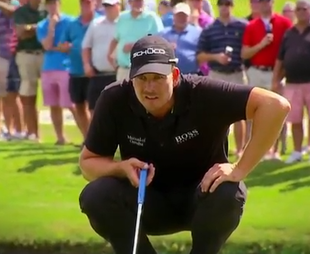 The other person that helped put his career back on track was his mental coach Torsten Hansson who stated; "I knew what we needed to do, what we had to sort out. People who end up in a chaotic and confused situation need to work with someone that can help them get back to where they want to go. Henrik had a lot of problems in 2011 and we had to start with what I call ‘the five processes.’ The first process is physical, the second is mental, the third is technical, the fourth is the strategic and tactical one and the fifth is the social process. All five are very important – you can be off with one of them but there is no way you can be off with two. If you have control of the five processes like he has right now you can achieve anything". The second slump in 2010 which lasted nearly two years has been attributed to what happened off the course. At the end of 2009 Stenson signed a three year sponsorship deal with Stanford Financial Group. Soon after this Stenson transferred most of his savings (reported to be well into seven figures) into the Stanfords Bank - Saving Investment Account on the advice of founder Sir Allen Stanford. Within months of doing so Allen Stanford was charged with US $8 billion fraud, and Henrik's investment was now worth nothing. His golf game went into a severe nose dive spiraling out of control, and his World Golf Ranking slipped from 4th to 264th - a massive drop in any ones terms. It doesn't matter who you are, if there's illness, injury or upheaval in their personal life, it will rock and shake a players confidence and outlook on their career. Again he came back from the brink and overcame the 2nd major slump in his career with the help of his mental coach and also the help of his team, he has people that he can trust. 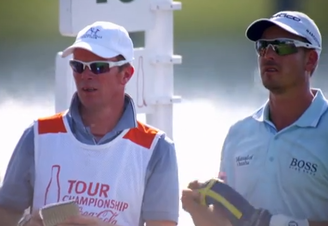 Over the last seven weeks he has accumulated 2 wins, 2 seconds, a 3rd, a tie 33rd and a tie 43rd. Very impressive indeed. But even during this golden period Stenson at the BMW at Conway Farms had a 'brain snap' and broke a club on the course and also destroyed a locker in the clubhouse, which he later apologized and paid for. For him to compose himself the next week and open up with a 64 in the 1st round on Thursday playing with Tiger is a testament of his ability to refocus and produce winning golf. How long can this last is anybody's guess, but the "golfing gods" seldom hand out periods like Henrik Stenson is experiencing at the moment, and they can take it away in a blink of an eye. So the real question is can Henrik Stenson keep it going and win a major next year and be the 1st male Swede to accomplish it. One thing is for sure, we will all be keeping an eye on him to see if he can. David Milne and Lawrie Montague - Pro Tour Golf College Your Success On Tour is Our Business Why Jim Furyk's Golf is So Reliable and The Keys to His Long-Term Consistency on the PGA Tour23/9/2013
 Why is Jim Furyk smiling? Well you would smile too if you had just shot a 12 under par round of 59 in a very important tour event at a very important time in the season, the Fed Ex Cup Playoffs. Can you imagine shooting a 12 under par round in an important tournament on one of the most challenging courses on the PGA Tour? Jim Furyk is not your conventional orthodox tour golfer like Adam Scott who seems to swing the club perfectly and play just as good. No, Jim Furyk has a golf swing that has been described by members of the media as "an octopus falling out of a tree" which is quite ironic when you consider his outstanding playing record. Yes Jim Furyk is the very same golfer who year in and year out makes a high percentage of cuts and earns enough money to retain his playing privileges on the PGA Tour. He's been doing it for more than twenty years!  So what is it about Jim Furyk's game that makes him so consistent and what can you learn that will help you to play as consistently? Lets have a look at what's under the hood and discover what makes Jim Furyk such a great golfer. I can tell you categorically that it's not his length off the tee! The longest he has averaged in any year was in 2011 at 281.4 yards or 256 metres (ranked 164th) and in 1996 he averaged 265 yards (ranked 102). He has consistently ranked between 150th to 180th throughout his career in driving distance off the tee.. I have broken his 20 year PGA Tour career up into five year segments and isolated the key statistics that have enabled Furyk to maintain his year in year out low scoring average. The stand out statistics are his driving accuracy and his scrambling game from within 30 yards of the edge of the green. His consistent low scoring average has allowed him to win US $55,750,658 million in career earnings, one US Open (Major) and twenty six professional titles since he turned professional in 1992. You will see in the table below that apart from his 1st two years (1994 & 1995) his ranking in both categories (driving accuracy and scrambling) have been phenomenal. The numbers are the average percentages and ranking for each 5 year segment The only time he had a hiccup in his career was in 2004 when he underwent surgery to repair damaged cartilage in his wrist, and that restricted him to playing only 14 tournaments that year and as you can imagine his statistics also suffered temporarily. Jim Furyk's Master Skill is Scoring Ability
Since 1997 his scoring average has gone over 70 on only four occasions and on each occasion only just over. This is exceptional, and it's also the reason why he won the Vardon trophy (awarded for low score average) on the PGA Tour in 2006, and he was awarded Player of the Year in 2010 by his peers. Consider this; he won the Las Vegas Invitational in 1995 and 1998 with a combined total of - 58 under par!! That's an average of 7.25 under par for the eight rounds! So it shouldn't surprise anyone when during the FedEx Cup at the BMW Championship he compiled that magnificent score of 59 and is only the 6th player to do so on the USPGA Tour. Again another player that does not have the "perfect swing," but what he has is the most important skill you can develop - your low score ability. This is the reason he has had an awesome 20 year playing career up to this point. And he isn't finished yet, that's for sure, as Jim Furyk will keep finding ways to keep getting better. David Milne and Lawrie Montague - Pro Tour Golf College Your Success On Tour is Our Business “Never give up on a dream just because of the time it will take to accomplish it. The time will pass anyway.” ― Earl Nightingale  Time and performance are two things that we deal with every day of our lives in business, work and play. For many high achieving individuals goals are the fuel that keeps them focused and motivated to give them more than they currently have, and to be more than they currently are. We can’t control time per se’ and we can’t control our performance outcomes - except to the extent that we can design, construct and execute an effective goal setting process that leads to the desired performance. And that's the key to achieving success in virtually anything. You need to build a bridge in your mind that we call a vision, and then we need to create some action steps to get there if we think the vision is worthwhile enough. By putting in place a simple step-by-step goal setting process like the one I’ll share with you over the next few weeks, you can build a performance platform that will help you to drive your golf performance trajectory upwards. Setting or establishing goals serve three main purposes for ambitious golfers who want to become successful at playing golf.
In the image below I’m using an example of three performance goals (competitive score average) to be achieved at certain times over an 18 month period. This is one of the ways we plan performance improvement for our students at Pro Tour Golf College. This is just one type of goal process. Turn Vision Into Action Now I’m sure that you would agree that being able to see your performance targets like this would be more helpful as opposed to having nothing at all to look at? You would be surprised how many elite amateur golfers (even tour professionals) are just going through the motions everyday hoping that somehow and in some way they will improve their game. No goals, just wishes, which without an action plan won’t give you much of anything. Dreams without a deadline are just wishes after all. So the challenge facing you is to work out a specific process that will help you to achieve your performance objectives over a short term through to a long time. Now this is easier said than done, but certainly not impossible with our simple goal setting process. Step one in our goal establishment process is for you to define your Career Goals, what we call your "Career's Purpose Goals." These are the "why you really do what you do goals." 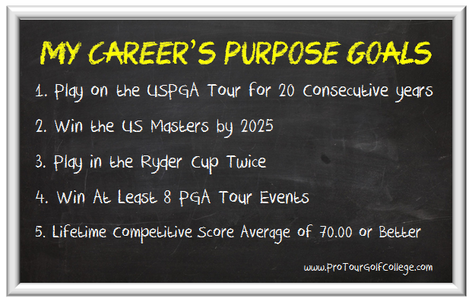 Types of Goals – My Career Goals There are lots of different types of goals from short-term goals to mid-term goals and through to longer-term goals. Your Career's Purpose Goals are your hall of fame goals - the serious (end of career) long term goals that will define your life and ultimately the success you have achieved in the sport of golf. And these are the goals we'll start with in this article. These are the goals that are the very reason you play the sport – they are highest results you believe you can achieve in your sport by the end of your career. How far do you want to go in the sport of golf? Have you ever thought about it? We hope that you have. Look at the example above (on the chalk board) of five career goals and think about what your top 5 would be. Can you look that far into your future? Believe me, the great golfers do. Tiger Woods was able to define exactly what he wanted from playing golf competitively when he was just a teenager, and look what he’s been able to achieve so far through the power of goal setting. GOALS DRIVE YOUR GOLF PERFORMANCE BY KEEPING YOU FOCUSED ON YOUR TARGETS Notice also in the example above how concisely I've stated a specific goal like the first one; “Play on the PGA Tour for 20 Consecutive Years?” I have stated where I want to play, (United States PGA Golf Tour) and also the level of performance I want to achieve. Because to play or compete on the USPGA Tour for 20 consecutive years I am affirming that I will play well enough each season to make enough income to continue to retain my playing privileges. Ok so now you understand what a Career Goal is, I want you to take the opportunity to write down your five most important goals for your career in a goals notebook that you keep aside just for your goals. If you don't have notebook go and get one. The real power of goal setting is in writing it down. And make sure you write your goals in pencil (don't type them) as we go through the goal setting process over the next few weeks because you are bound to want to change some of them as you go along. Keep in mind that this is not easy for advanced and elite golfers to do because their goal focus is usually very short term, and mostly centered on events surrounding them rather than far off into the future. You need to use a bit of “blue sky dreaming” here, where you imagine what your life will be like when you have finished competing. What would it feel like to stand in front of your peers, friends and relatives as you are inducted into the Hall of Fame? Ignore the Reasons Why You Can't Part of the reason this is challenging for many golfers is that you might have a voice in your head rationalizing your thoughts, and possibly putting up road blocks and reasons why your career goals can’t be achieved. Just do it as if you could. Imagine that it was possible to achieve your Career’s Purpose Goals, what would that be like for you? Rather than think about the reasons why you can’t have these goals, think of all the reasons why you can. Who says that you’re not capable of achieving these milestones in your career anyway? How would the naysayers who knock you know what you are capable of, and what you can achieve in your future? No one knows-only you. Forget all the reasons why not, and start focusing on why not now! Yes they are a long way from where you are now; but remember the quote from Earl Nightingale at the top of this article: “Never give up on a dream just because of the time it will take to accomplish it. The time will pass anyway.” So get on with it and write down your five Career’s Purpose Goals right now in your goal notebook. Next, I want you to look at the goals you have chosen and pick the three that you would most like to have right now from the list of five. What is your first choice? The Re-Rank is the Key Now I want you to re-rank your Career’ Purpose Goals from one to five in order of importance and rewrite them just like the image below. Rank fro the most important career goal to the least important. 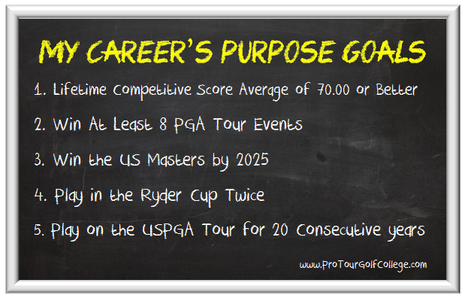 Now you might be wondering why I ranked these very long-term goals the way I did. Well the reason is that the key to achieving these goals fundamentally will get down to golf course performance and what I mean specifically is your competitive score average. When you think about it, you couldn't achieve any of these goals if you can’t produce a low enough score average to start with. So my first goal has to be a long term performance goal like having a consistently low score average of 70.00 or better because that will set up the opportunities to have the other goals. This is an important part of any goal setting process and the goals that you choose will be stated positively and be possible to achieve with a big stretch in your ability. And there’s really no other way of thinking about it. They should never be easy to get. Goals should stretch your ability beyond comfortable, and in turn stretch your performance to places you’ve never been before. This is the very reason that great golfers never stop trying to improve their game. They have big goals that require constant and never-ending change. Now the next step in this process is for you to rewrite each of your chosen Career’s Purpose Goals in your notebook in a very positive way. State your chosen goal like you really mean to have it and then write your reason or justification behind your choice of this goal. Ok Now it’s Your Turn Write out your five chosen goals in your goal notebook just like I’ve done in the example above and your reason or justification for achieving them. Lay out your goal structure in your notebook as I've done below. Keep it simple, and you don't have to write a lot, just be positive and specific. Next week we’ll take this goal setting process one step forward and formulate your long-term goals through to your short term goals to help you to build better and more effective practice plans so you are better prepared when you go to work on achieving your most important goals for each day of each week of each month of each year...
We hope you enjoyed our goal setting article and please share your thoughts in our comments section and on facebook and twitter. Lawrie Montague and David Milne - Pro Tour Golf College Your Success On Tour is Our Business 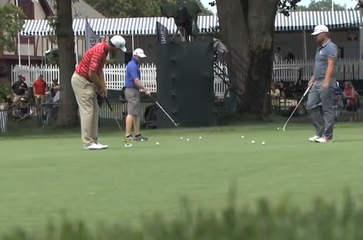 Thinking and Skill Execution- Part I When triple major champion Padraig Harrington won the 2007 Open Championship after a playoff with Sergio Garcia he described his thoughts as he prepared for his final putt: “No conscious effort whatsoever went into that putt. There were no thoughts about ‘this is for the open’…I stroked it in”. I’m sure you would have heard of similar things before. Athletes speaking of being in the right state of mind when performing well, that they couldn't do anything wrong, or perhaps you have experienced this yourself? If so you may have been fortunate enough to have experienced ‘flow’. “Flow is an almost automatic, effortless, yet highly focussed state of consciousness”[1]. It is a state that many players strive to achieve as it often accompanies increased performance. The following two-part blog aims to provide an insight into what constitutes flow and how it can be achieved in your game. The first step in achieving flow is to understand thoughts, actions, and thinking.
System 1- Fast and automatic (e.g., recognising faces or avoiding obstacles) System 2- Slow, effortful, and deliberate (e.g., filling in a tax form or parking in a narrow space)  In order to achieve success in a task we often attempt to control our thoughts. For example, an anxious player who is putting in a high-pressure situation may become preoccupied with trying to execute explicit coaching instructions (e.g. keep my head down and eyes over the ball). This can result in what’s known as ‘paralysis by analysis’[1]. By over-thinking skill based tasks in high-pressure situations our natural abilities to execute the task effectively can be diminished. When stakes are high many players engage in System 2 thinking. There are strategies you can implement to recognise System 2 thinking and adjust your behaviours to suit. For example, Rory McIlroy used conversations with his caddie to prevent himself from engaging in excessive thoughts of self-control: “Having a conversation about something completely different is probably the best thing for me as it takes my mind off it and stops me from getting too involved in what I am doing”. It is important to remember that these strategies require practice. It may not work if you just go out there and blabber to your caddie about what you did on the weekend. When, where and how you use a strategy needs to be suited to your game. It also needs to be practiced so that your mind is able to effectively switch between System 1 and System 2 thinking. My next blog in November will provide an insight into how these thoughts might be translated into skilled action and ultimately flow. [1] Csikszentmihalyi, M. (1996). Creativity: Flow and the psychology of discovery and intervention. New York: Harper Collins. [2] Kahneman, D. (2011). Thinking, fast and slow. London: Allen Lane. [1] Moran, A. (2012). Thinking in action: Some insights from cognitive sport psychology. Thinking Skills and Creativity, 7, 85-92.  If you where coaching this player what changes or suggestions would you make to him after watching the video? Before you go and make the changes just consider these facts.
His name is Thaworn Wiratchant and he hails from the Kingdom of Thailand, and in 2013 he got an invite and played the US Masters at forty six years of age! He is a true self taught professional golfer and has a phenomenal short game (and I mean phenomenal!) and brilliant scrambling skills. Here are just some of his statistics from last year 2012 on the Asian Tour. Now back to the changes you would implement to improve Wiratchant's game. Will improving Thaworn's swing shape or full-swing alignments make any difference to his scoring? An interesting question, as his statistics indicate that compared to the other parts of his game he doesn't rank very well in driving accuracy (rank 85) and G.I.R. (rank 114). I can tell you first hand watching him play that I don't believe it will, at least not by enough to make a real difference to his scoring average.  The reason I say this is that Wiratchant ranks very high in stroke average 70.24 (rank 3), birdie average 3.86 (rank 7) and to par -126 under he's ranked Number 1. Did you catch that last stat...126 under par! The main reason his G.I.R is low is that he is extremely aggressive with his approach shots setting up more birdie chances, and so does miss some greens going at tight pin positions. But when you possess a scrambling game like he does, he keeps the bogies off his score card anyway. Co-director at Pro Tour Golf College Lawrie Montague and I have asked advanced and elite golfers on numerous occasions which would you select out of the following?
So Thaworn Wiratchant has learned how to "golf his ball" to produce low scores and he doesn't get caught up with how his swing looks, just like Lee Trevino and Raymond Floyd who in his case bagged 4 majors with a "less than perfect" golf swing. Jim Fuyrk is doing the same right now on the PGA Tour. A good swing is one that is technically correct, but a great swing is one that repeats under all conditions. A perfect looking golf swing doesn't equal perfect results on the score card. This is what really matters if you want to shoot 70 on a professional golf tour. Take what you've got and teach it how to go low. That's what Thaworn Wiritchant does. David Milne and Lawrie Montague - Pro Tour Golf College Your Success On Tour is Our Business What if I shared with you just one simple to understand - yet rarely focused on golf statistic that would completely and totally change your level of success in golf if you focused on developing it in your game. Would you be interested to know what it was? I bet you would, but before I share it with you I’m betting that when you find out what it is many of you are more than likely going to say to yourself “I already knew that, that’s no big deal”. "I already knew that" is a very common response to hearing something that seems so obvious but it is this type of response that has shackled many a golfer and stopped them from improving their golf scores.  It’s a problem we have faced many times over the years developing advanced and elite golfers; cynicism, which my dictionary tells me, is the state or fact of having cynical attitudes or beliefs, or a cynical character or quality. Sadly this debilitating attitude is holding many amateur and professional golfers from consistently achieving their goals in golf. Most of the trouble seems to stem from the massive amount of information circulating around the internet every second that captures your attention shifting it from focusing on the few game improvement skills that would drive your golf scores down and your performances up. Too many golfers ignore the truth in golf statistics in favor of short term fads and gimmicks that lead to unproductive behavior that does not guide you towards continuous improvement. Proximity to the Hole Here's the bottom line. Proximity to the hole is the stat of all stats. Hit your golf shots closer to the hole and you will have less putts and a lower golf score. Seriously, these are the only two basic statistics that will make the most difference to your potential to produce lower golf scores;
You know the crazy thing about this is that we still find elite golfers ignoring or who don't want to believe this, and spend way too much time making their swing look right or perfect at the expense of making their golf score look right. There are many highly competent professional golf instructors that will help you to genuinely help lower your golf score without trying to make your golf swing look like Tiger Woods! You need to find an instructor who knows the truth about golf performance - lower golf scores equals more success at golf. And go and work with them regardless of where they are. Look this isn't that hard to do. Can you measure how far you are hitting your shots from the hole for every shot you play in a tournament or for that matter when you are practicing on the golf course inside 150 yards (137 metres)? Yes you can, but will you? That's the key question isn't it? You don't need sophisticated technology to track and measure your results from inside 150 yards, you simply need to write some information on a scorecard. So what if I gave you an approach shot analysis scorecard that you can use to record your vital information (or that of your students) inside 150 yards (137 metres) of the green, that would definitely help you to lower your golf scores. Would you use it every time you play in a tournament or competition for 6 weeks?
Lowering your golf score starts with an analysis of your approach shots into the green and this score card will help you to understand how many greens you hit from within 150 yards and also the proximity to the hole with different clubs that you use from the different distance ranges you face every time you play.
All Dave and I ask is that you use the scorecard consistently and that let us know how its working for you by sharing your results with us because we are very passionate about helping you to lower your golf scores in tournaments. If you are on Facebook and Twitter share our articles with your friends so that we know that you 'like' the information that we share with you each week. If you've been a little cynical and obstinate about your golf improvement and its not working for you then change. Do it today - do the simple things that lead to lower golf scores. As I said before, its easier than you think if you focus on the right statistics. The more open minded you are to learning new and better ways to improve your golf scores, the more likely you are to do just that. Lawrie Montague and David Milne - Pro Tour Golf College Your Success On Tour is Our Business PGA Tour: What Has Henrik Stenson Changed that Has Made Him a Winner Again on The PGA Tour?7/9/2013
"When you are in contention to win tournaments you don't need motivation from anybody. But when you're missing cuts and not playing well it's easy to lose sight of the simple things that get you into contention and that's when you need the team around you". 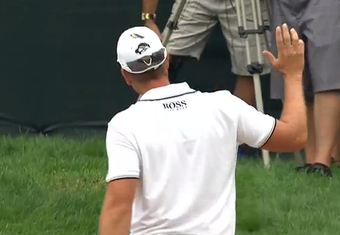 A few weeks ago Dr. Jay-Lee Longbottom in her article about the six elements of mental toughness spoke about the players who had most of the elements lined up some of the time, and others who have them lined up for a period of 4 to 6 weeks. I identified Henrik Stenson as one of those 4 to 6 week period golfers who has been in contention in nearly every tournament he has played in since the US Open. The record shows he finished 2nd in the US Open, followed by a T-2nd in the British Open, 3rd in the US PGA, 43rd in the Barclay's and this culminated in a win at the Deutsche Bank Championship. A terrific run, and looking from outside it would be easy to assume that Henrik, a former US Players Champion (2009) has always been a consistent tour player. That is not even close to the truth if you have followed Henrik's career since he turned professional in 1999. A national player who represented his country Sweden in the World Amateur Championship in Chile in 1998, he turned professional and played the European Challenge Tour in 1999 and 2000 where he won the Order of Merit - winning three times. All looked good until he went into a "slump" in the 2001 and 2002 season and lost all trust and confidence in his golf game. It was during this period that Henrik started to work with coach Pete Cowan who helped him through his difficult period and got him back on track. From 2004 to 2009 he won 5 times on the European Tour and the prestigious US Players Championship at TPC Sawgrass. He was a top ten player in the world and the future looked rosy.  By the end of 2011 he had earned only US $327,799.00 and ranked a lowly 180th on the money list, and only his win at the Players Championship (5 year exemption) allowed him to keep his playing privileges on the PGA Tour. Yet another slump he had to endure which lasted until the end of 2012 when he traveled to South Africa and won the Open there. One of the things that has helped him to bounce back has been his family and the close team he has built around him that supports him and his game. His performance team consists of;
They have all stuck with him through the bad times and the good times, and more importantly he has stuck with his team. These are some of the comments they have said of Henrik. Pete Cowan: It takes balls to be a good player and Henrik has lots of that, he's not a quitter! Gareth Lord: Attention to detail and hard worker. Torsten Hansson: Ambitious with big dreams for the future. Cornel Driessen: Working with Pete Cowan and mental coach to establish training goals and periodization. Dan Salmonsson: Very demanding of himself and everyone around him and rightly so. Looking at some of his key performance statistics when comparing 2011 to 2013 you can see where the difference of finishing 180th in the money list to currently leading the FedEx Cup lies. It is quite plain to see as the numbers don't lie. More fairways and greens in regulation with better scrambling results equals lower golf scores.
In fact his Strokes Gained-Putting putting has gone backwards and as its a statistic that only measures putting performance against the field, he does not depend on green-side skills to make the percentages look good. The recipe is pretty straight forward;
As Henrik said in his interview after his victory; "When you are in contention to win in tournaments you don't need motivation from anybody. But when you're missing cuts and not playing well it's easy to lose sight of the simple things that get you into contention and that's when you need the team around you". I think that sums it up perfectly don't you? David Milne and Lawrie Montague - Pro Tour Golf College Your Success On Tour is Our Business The Simple and Overlooked Factor That Every PGA Tour Golfer Knows and You Need to Learn Today6/9/2013
 At 150 - 175 yards what is your G.I.R percentage? At 150 - 175 yards what is your G.I.R percentage? I personally don’t think it’s always helpful to think that the golf improvement process can be fast-tracked to produce lower golf scores, because it is unrealistic as every golfer learns in his or her own best way. Some learn some golf skills faster than others, not always because of the quality of the instruction, (although this certainly helps) but mostly because of the way each golfer processes information and translates it into performance. The time it takes to improve your golf score is relative to the relevance of what you work on, and how much of it you do. There are two things you have to be able to integrate successfully into your golf practice sessions as an elite golfer to generate improvement;
How much practice you do is based on your available time and also what your goals are as they relate to performance improvement. If you want to improve your performance there's one thing that you can do that will help you to reach your performance goals sooner. Increase the amount of pars you make in every round and your golf score average will improve. Now I know that this is simple and obvious, but you would be surprised at how many advanced and elite golfers focus on anything but making more pars per round.  The standard of a golf hole is its par, and your responsibility is to make as many as you can in 18 holes. So practicing efficiently really gets down to practicing the golf skills that have the most effect of making more pars in a round of golf. So let’s say that you average 10 pars per round, what could you practice more of, and also better to increase your par average to 12 pars per round? Well, of all the areas that you could evaluate, a good place to start is to evaluate your par 3, par 4 and par 5 performances. What is you par average for the par 3, par 4 and par 5 holes for your last 15 competitive rounds? Do you know? What we are talking about is your total strokes under or over par on these holes. The way you work it out is to divide the total amount of strokes your played on par 3, 4 and 5 holes and divide this total into the total holes you played. Let me explain what I mean. Rory McIlroy ranked 2nd on the PGA Tour in 2012 for his par 3 Scoring Average. He had a total of 648 strokes on the 216 par 3 holes he played on the PGA Tour. So if you divide his total strokes of 648 into the total holes he played 216 you get a par 3 Scoring Average of 2.99 (648 ÷ 216 = 2.99). So for the 60 rounds that Rory played he played the 216 par 3 holes in minus 2 under par for the season. Jason Dufner ranked 4th in his par 4 Scoring Average in 2012 on the PGA Tour. He had a total of 3,552 strokes on 888 par 4 holes he played. So if you divide his total strokes of 3552 into the total holes he played 888 you get a par 4 Scoring Average of 4.00 (3552 ÷ 888 = 4.00). For Jason Dufner’s 70 rounds played, he played the 888 par 4 holes in 10 under par for the season. Phil Mickelson ranked 15th in 2012 for his par 5 Scoring Average on the PGA Tour. He had a total of 1197 strokes on the 261 par 5 holes he played. When you divide his strokes played against the holes he completed he had a par 5 Scoring Average of 4.59 (1197 ÷ 261 = 4.59). 4.59 equates to 109 under par on par 5 holes for the 79 rounds he played in 2012. On a par 72 layout you will probably have four par 3 holes, ten par 4 holes and four par 5 holes.
 David working with a student on distance control with Trackman David working with a student on distance control with Trackman Would you make more pars if you hit more greens in regulation on par 3, 4 and 5 holes? I know your answer would be yes, but it’s a pretty vague question, so let’s me be more specific. What is your percentage of greens hit in regulation for the following distance ranges over your last 15 competitive rounds? 1) What is your greens hit in regulation average from less than 100 yards (90 metres)? ........... ______________ 2) What is your greens hit in regulation average from 100 to 125 yards (90 to 114 metres)? ..... ______________ 3) What is your greens hit in regulation average from 125 to 150 yards (114 to 136 metres)? ... ______________ 4) What is your greens hit in regulation average from 150 to 175 yards (136 to 159 metres)? ... ______________ 5) What is your greens hit in regulation average from 175 to 200 yards (159 to 182 metres)? ... ______________ Here’s a summary of the three great golfers I mentioned earlier who are also recent major winners. Have a close look at their statistics for their score average against par, and their greens hit in regulation for the 5 distance ranges I've chosen. Yes I could have gone out further from the hole but I really wanted to focus on shot-making skills where the longest golf club used was a long iron or possibly a hybrid into the green right down to a wedge. Notice how they all play par 3 and 4 holes around par and annihilate the par 5 holes? This is very common with PGA Tour golfers. Notice also their greens hit in regulation percentage is around 60 to 90 percent for the five distance ranges. Their competitive score average is a reflection of how effectively they play their par 3, 4 and 5 holes and your responsibility (with the help of your golf instructor) is to design your golf practice routines to help you to produce better performances against par. Now if you’re like many advanced and elite golfers you probably have a fair idea already what your greens hit in regulation percentage is per round, but more than likely you've never broken it down into the five distance ranges described above to identify your weakest approach shot distance range? The top golfers on the PGA Tour know what their weakest distance ranges are when hitting approach shots into the green because they can look them up on the PGA Tour website. And because they do know, they can work closely and more effectively with their golf swing coaches on specific strategies to improve their weak approach shot distances thereby increasing their chances of lowering their competitive score average, and in-turn increasing the potential to earn more income. Now you might not be able to have access to as many statistics as PGA Tour players can but you can certainly start tracking your approach shots into greens on every hole over the next 4 to 6 weeks so you can identify which distance range/s are your weakest.
Look for patterns in your score against par average by identifying your par 3, par 4 and par 5 performances, then work out which distance range/s are keeping your score average higher. Are you more likely to make bogey or worse when you hit your tee shots or approach shots from 175 to 200 yards? Or are you weaker from 125 to 150 yard range? This is a useful way to diagnose problems in your long game that keep your par average higher than you want it. Improve your par average and you will lower your score average. Keep it simple, and focus on improving your greens hit in regulation on your weakest approach shot range and you will discover that when you will increase your par average you will decrease your score average. It doesn't get much simpler than that. Lawrie Montague and David Milne - Pro Tour Golf College Your Success On Tour is Our Business 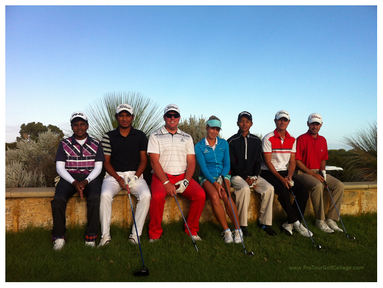 I recently received an email from an elite golfer asking some great questions about our Tour Bridging Program so I thought I'd share our reply. Thank you for your questions about our program. In simple terms our TB program is built upon 4 simple guiding principles. 1. Assessment 2. Forecasting 3. Prescription 4. Monitoring You will start by being thoroughly assessed in every department of your game over the first 2 weeks of the program from putting skills to golf course skills. After your 2 week assessment our practice framework for the next 8 weeks covers all the golf skills that you need to practice, and we will work with you on upgrading your weakest-most important golf skills. So from week 3 to week 6 you will be working in a technique development phase for 70 percent of your week, and the rest of the time in a targeting phase. From week 7 to week 10 you will be in the targeting phase of development for 70 percent of the week, and for 30 percent of the time managing your technique. Keep in mind that this is dependent on where you are technically with the different skills that make up your game, and more importantly how much influence they have on your high score average. This will decided by you, David and me after you complete the first 2 weeks of assessment. Yes you're right, we don't take lunch breaks, because you don't take lunch breaks when you play on a golf course. You are on the golf course for at least 5 hours so we have mini breaks where you can stop and drink and eat as you feel the need.  Golf course day is coaching and observation by David and myself. We watch you play and compete and from this information we will help you to play better. Our golf course lessons are always based on how we observe you playing. Remember our whole focus is on lowering your competitive score average. After training each day our students go back to their respective courses (some are members at Joondalup Golf Course) to play holes, or go to the gym or take a break. There is a good gym within an easy 10 minute drive of our facility. Our training is intensive, and it's very focused on improving your skills to improve you score, and each golfer has a different map for getting there. So even though our day to day practice framework is consistent (there is variation), what you do within it is completely geared towards your needs. Our part time program is only for students who have attended our program full-time for 10 weeks previously. And many of those students now are working part time to fund their ongoing training and we allow them continued access to the program around their work hours. The other part time students are our tour players who come in and out based on their playing schedules and they're members of our Tour Player Program.  The bottom line of our program is that you will know how to work on your game the right way after completing 10 weeks in our program. After completing our 10 week training it will completely change the way you think about golf as an elite golfer and probably the most important part of our program is the mental/emotional support you receive where you learn the mind-set required to reach the top of the amateur or pro game. You will receive continued support when you go home, and you will be able to come back for shorter periods of 4 weeks for follow - up instruction in our program. This is how you become eligible for part - time training in our program in the future. We train very differently (believe me) to what you have been exposed to. You are not getting golf lessons and paying by the hour, or paying for a program of lessons with lots of time on your own. We simply don't work that way. You are supervised for 25 hours of training in our program each week. You are getting training to become tougher mentally and emotionally, whilst at the same time upgrading your critical to success golf skills, because our primary goal is to help you to reach your goal of becoming a top level golfer. I have no hesitation is saying that it will be the best thing you have done for your golf, not to mention for you. But be prepared to practice like you never have before. 5 hours a day each week in our program for 10 weeks is greater than a years practice taking lessons and trying to figure it out for yourself. Best Regards, Lawrie Montague and David Milne - Pro Tour Golf College www.protourgolfcollege.com |
Archives
June 2019
|
||||||
Proudly Supported By
Copyright © 2011 - 2018 Pro Tour Golf College
Website Managed By Golf Performance Media
All Rights Reserved
Website Managed By Golf Performance Media
All Rights Reserved



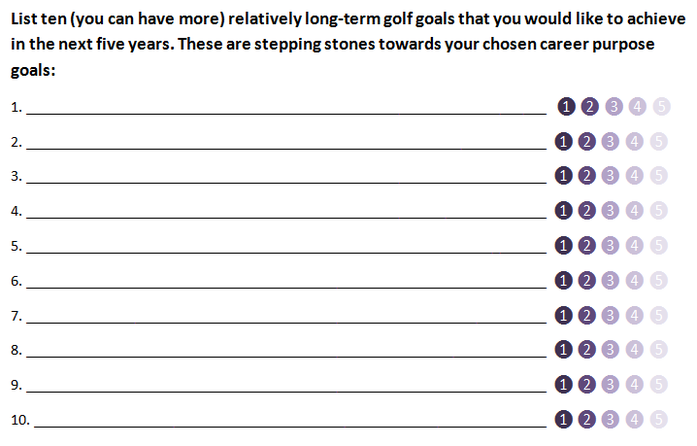


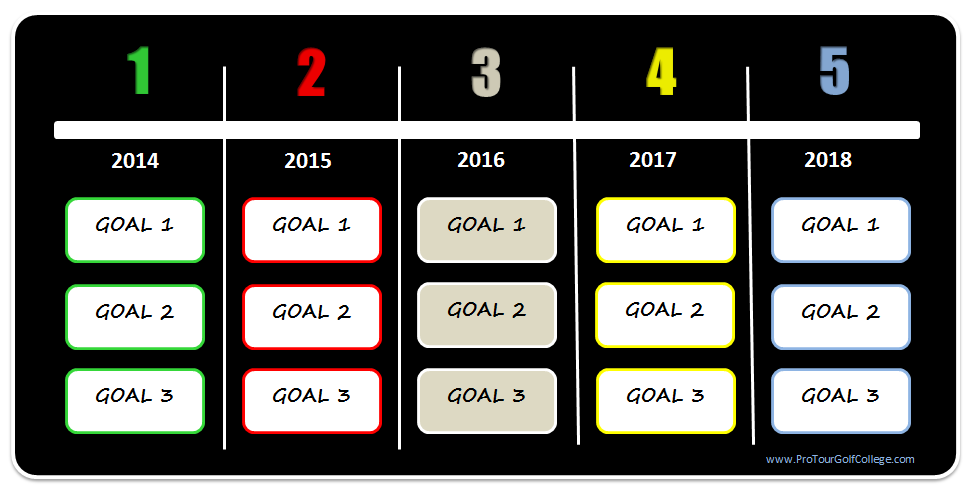

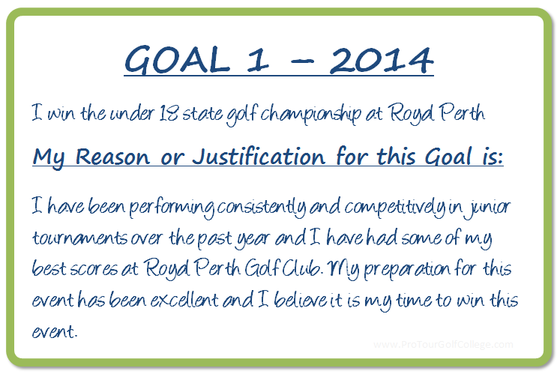

























 RSS Feed
RSS Feed



